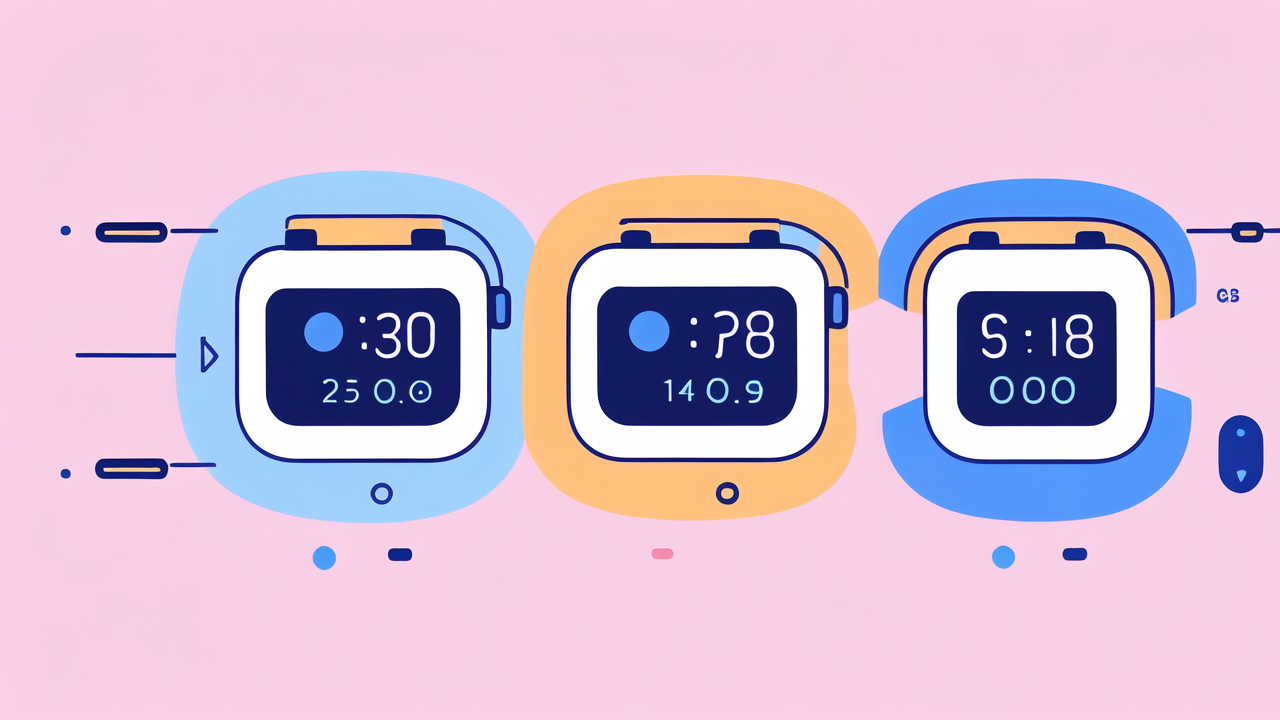Understanding the Evolution of Step Counters in Wearable Technology
A Brief History of Step Counters and Personal Tracking
Step counters have come a long way since their inception. They started as simple mechanical devices. These early models used a pendulum mechanism to count steps. As technology advanced, so did step counters.

Digital step counters emerged in the 1980s. They were more accurate and could store data. The rise of smartphones brought a new era for step tracking. Apps could use the phone's sensors to count steps.
Wearable devices like Fitbit made step counting mainstream. They combined step tracking with other features. This made them more appealing to consumers. Today, step counters are part of a larger ecosystem of health tracking tools.
Technological Advancements in Step Counters
Modern step counters use advanced sensors. These include accelerometers and gyroscopes. They can detect movement in multiple directions. This improves accuracy in step counting.
GPS technology has also enhanced step counters. It allows for more precise distance measurements. Some devices can now differentiate between walking and running. They can even detect different types of activities.
Battery life has improved significantly. Many devices can now last for days or weeks. This makes long-term tracking more convenient. Waterproof designs have made step counters more versatile. Users can wear them while swimming or in the shower.
The Integration of AI and Machine Learning in Step Counting
AI and machine learning have revolutionized step counting. These technologies can learn from user patterns. They can distinguish between different types of movement. This leads to more accurate step counts.
Machine learning algorithms can adapt to individual walking styles. They can recognize when someone is carrying a load. This affects their gait and step count. AI can also detect anomalies in movement patterns. This could indicate health issues or injuries.
These technologies enable personalized insights. They can suggest improvements in walking technique. They can also predict future health trends based on step data. This makes step counters more valuable for long-term health management.
The Role of Step Counters in Health and Wellness Trends
How Step Counters Contribute to Personal Health Goals
Step counters play a crucial role in personal health management. They provide a simple way to track physical activity. This awareness often leads to increased movement throughout the day. Many people use step goals as motivation to be more active.

Step counters can help in weight management. They estimate calories burned based on steps taken. This information can guide dietary choices. It also helps in creating a calorie deficit for weight loss.
For those with chronic conditions, step counters offer valuable data. Doctors can use this information to monitor patient activity levels. It can help in managing conditions like diabetes or heart disease. Step counters encourage a more active lifestyle, which is beneficial for overall health.
The Impact of Step Counters on Lifestyle and Fitness Regimens
Step counters have changed how people approach fitness. They've made it easier to set and track daily activity goals. Many users find themselves taking extra walks to meet their step targets. This leads to a more active lifestyle overall.
Fitness programs often incorporate step count goals. This provides an easy way to measure progress. It also allows for gradual increases in activity levels. Step counters can show patterns in daily activity. This helps users identify times when they're most sedentary.
Some workplaces have started step count challenges. These promote employee health and team building. Step counters have made it easier to gamify fitness. This adds an element of fun and competition to staying active.
Step Counters and Their Influence on User Engagement in Health Programs
Step counters have boosted engagement in health programs. They provide immediate feedback on activity levels. This real-time data keeps users motivated and involved. Many health programs now include step counting as a core component.
Insurance companies often offer incentives for step count goals. This encourages policyholders to stay active. Some employers use step count data in wellness programs. This can lead to reduced healthcare costs and increased productivity.
Social features in step counting apps increase engagement. Users can share their progress and compete with friends. This social aspect adds motivation and accountability. It turns personal health goals into a shared experience.
Future Trends and Developments in Step Counter Technology
Innovations on the Horizon for Step Counters
Future step counters will likely be even more accurate. They may use advanced sensors to detect stride length. This would improve distance calculations. Some may use AI to recognize different terrains. This could provide more detailed activity analysis.

Wearable tech may become more integrated into clothing. Smart fabrics could track steps and other metrics. This would make tracking even more seamless and comfortable. Battery technology improvements will lead to longer-lasting devices.
Step counters might start using augmented reality. This could provide real-time feedback on walking technique. It could also gamify the walking experience in new ways. Voice assistants may be integrated for easier interaction with step data.
The Integration of Multiple Body Measurements in Future Wearables
Future wearables will likely combine step counting with other health metrics. Heart rate variability and blood oxygen levels could be standard features. Some may even track hydration levels or nutrition intake.
Sleep tracking will become more advanced. It might integrate with step data to show how activity affects sleep quality. Stress levels could be monitored through skin conductivity. This would provide a more holistic view of health.
Wearables might start measuring environmental factors. Air quality or UV exposure could be tracked. This would help users make informed decisions about outdoor activities. The goal is to provide a comprehensive health profile.
Ethical and Privacy Considerations in Wearable Tracking Technology
As wearables collect more data, privacy concerns grow. Users need to know how their data is used and stored. Companies must be transparent about data practices. Strong encryption and user control over data sharing are crucial.
There are ethical considerations in how health data is used. Insurance companies might use step data to adjust premiums. This raises questions about fairness and discrimination. Employers using step data must respect employee privacy.
The accuracy of wearable data is another concern. Medical decisions based on this data need to be carefully considered. There's a risk of over-reliance on wearable tech for health management. Balancing convenience with privacy and accuracy will be an ongoing challenge.




Leave a comment
This site is protected by hCaptcha and the hCaptcha Privacy Policy and Terms of Service apply.